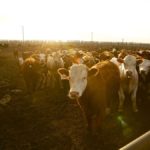Western Canadian feeder cattle markets traded $3-$5 above week-ago levels on average; stronger buying interest was noted on short-keep cattle with prices quoted $5 to as much as $8 higher. Feedlot operators stepped forward more aggressively with ideas that yearling supplies will dwindle over the next month. Quality cattle are starting to thin out at […] Read more












